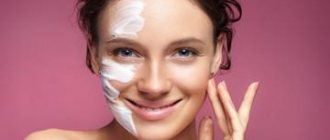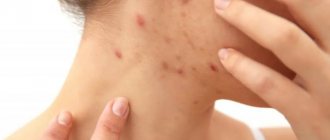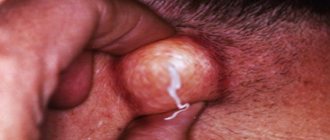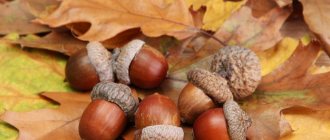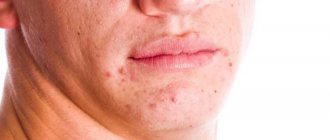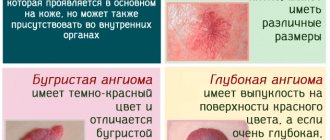Causes of acne in children and adolescents
Pimples occur when pores become clogged. What type of acne occurs depends on what is clogging the pores. Although scientists are still trying to figure out why some people's skin is more prone to developing acne, it's likely that hormones play a role. This explains why acne is so common among teenagers.
During puberty, hormones called androgens increase the size of the skin's oil glands. These glands begin to produce more sebum, which can clog your pores.
But acne can start before (or after) adolescence. About 20% of newborns suffer from neonatal acne, which usually appears between the second and fourth weeks of life. This type of acne goes away on its own without leaving any scars. It also does not increase the risk of developing severe acne later in life.
Some children develop infantile acne, which appears between 3 and 6 months of age. Baby acne can cause deep nodules and cysts, leading to permanent acne scarring. Fortunately, childhood acne is rare. Source: Modern concept of the etiopathogenesis of acne vulgaris. Isaeva M.S., Burieva Z.T. Avicenna Bulletin, 2010. p. 127-132 Pathogenetic approaches to the treatment of acne vulgaris. Khaldin A.A., Mareeva E.B., Skvortsova A.I. Russian Journal of Skin and Venereal Diseases, 2012. p. 34-37.
Diet for acne-free skin: sample menu
A diet based on proper balanced nutrition is one of the effective ways to combat rashes, aimed at internally improving the condition of the skin. After just a month of regular proper nutrition, you will notice improvements. You can diversify your diet by adding healthy snacks: fresh vegetables, fruits, nuts, seeds.
Let's give an example of how a dietary menu for acne can be created:
Breakfast
- Cereal porridge in water with the addition of dried fruits.
- Muesli with berries and seeds.
- Wholemeal rye/bran bread with unsalted salmon and avocado.
- Bran with nuts and fresh fruits.
- Avocado with boiled egg and bran.
Dinner
- Fish: mackerel, salmon, sardines, etc. must appear in the diet a couple of times a week.
- Meat: stewed or steamed beef, boiled or baked white meat (chicken, turkey), you can prepare chicken broth with vegetables.
- Suitable side dishes include steamed or grilled vegetables, brown rice and other grains, and boiled potatoes.
- Salads made from fresh vegetables, herbs with the addition of cereals and seeds (chia, pumpkin, etc.) will enrich the diet with antioxidants, vitamins, fatty acids, and improve the color and condition of the skin.
Dinner
- Steam cutlets made from beef liver and minced fish/chicken.
- Roasted turkey with rice and vegetables.
- Vegetable stew with beef stew.
- Pilaf with chickpeas, carrots and chicken.
Replace usual sweets with dried fruits, natural marshmallows, and a slice of dark chocolate with at least 70% cocoa content. You can sweeten dishes or drinks by adding fructose or stevia.
What causes acne and what causes it
While stress may not cause acne, it can make existing acne worse. Research shows that when stress increases, the severity of acne increases. Acne may get worse if teens:
- sleep too little;
- eat certain foods traditional to the Western diet;
- use oily cosmetics and skin care products.
Almost everyone experiences at least a few breakouts during their teenage years. It is impossible to predict who will develop more severe acne, but there is an increased risk if one or both parents (or other close blood relatives) have had severe acne that results in scarring.
Where do acne come from?
For treatment to be effective, it is necessary to correctly determine the root cause of acne. Doctors identify a great variety of them. However, the most common are the following:
- hormonal imbalance in the body;
- unbalanced diet, as a result, deficiency of vitamins and microelements.
Most often, acne occurs during puberty. At this age, the amount of androgens in the body sharply increases. This entails a disruption of the functional activity of the autonomic nervous system. Subcutaneous fat begins to be produced in large quantities and accumulates. As a result, a rash appears on the face, which causes aesthetic discomfort.
Types of acne, formation mechanism and what they look like
Teenage acne on the face of adolescents can be of several types (or a combination of them). Source: Pathogenetic rationale for local acne therapy in adolescence. Mazitova L.P., Aslamazyan L.K., Kvachakhiya L.L., Namazova L.S. Pediatric pharmacology, 2008. pp. 94-97):
- whiteheads;
- black dots;
- acne;
- nodules, cysts, or both (deep and painful).
- Whiteheads . Removing whiteheads can lead to more whiteheads and acne scars, which is why dermatologists recommend treating whiteheads with an acne treatment rather than picking at them. Whiteheads form when excess oil and dead skin cells clog the pores. This causes white or flesh-colored pimples to appear. Medical name: closed comedon, which means “closed pore.”
- Black dots . Dermatologists recommend treating this type of acne with a retinoid, since squeezing the blackheads can cause infection or permanent scarring. This type of acne also develops when excess sebum and dead skin cells accumulate inside the pore. As the secretion accumulates, it expands the pores and you see blackheads. Many people mistakenly believe that a black spot is dirt. What you are actually seeing is a chemical reaction. When deposits inside the pore react with oxygen in the air, a black color appears. Medical name: open comedo, which means “open pore.”
- Sometimes excess oil, dead skin cells and bacteria get trapped in the pores. Bacteria, which are usually found on our skin, can multiply quickly in excess oil. As the pores become filled with bacteria, inflammation (swelling) develops and a pimple appears. Medical name: If a pimple contains pus, it is called a pustule . A pimple without pus is called a papule .
- Nodule or cyst . When the pores become filled with excess oil, dead skin cells and bacteria, causing inflammation (swelling) that penetrates deep into the skin, a lump or cyst forms. Because these rashes penetrate deep into the skin, they can be painful. The main difference between a nodule and a cyst is that the cyst contains pus. Because nodules do not contain pus, they feel firmer to the touch than cysts.
Cosmetic professional procedures
Caring for teenage skin should be comprehensive. In addition to home procedures, you can also use the services of beauty salons if possible.
Today, more than a dozen different professional procedures are provided for the effective treatment of teenage rash.
There are cheaper options, but there are also those that not everyone can afford.
For example, chemical peeling for problem areas of the skin is an effective and inexpensive procedure that works both for the prevention and treatment of acne, and costs tens of times less than a session of equally effective mesotherapy.
Here are some salon treatments that are most popular and effective in combating teenage pimples and acne.
- Cryotherapy.
This is a relatively “young” method in cosmetology, which allows you to almost completely get rid of acne in just 5-7 sessions. This method is based on the use of liquid nitrogen, the temperature of which is about -250 degrees.
Performing this procedure at home is impossible, as appropriate equipment is required.
- Peels – chemical and mechanical.
Either one or the second version of peelings can be performed both at home and in a beauty salon.
The principle of both peeling options is based on the removal of keratinized scales of the epidermis, which clogs the pores, which provokes the appearance of sebaceous plugs, which, when inflamed, form acne on the back of a teenager.
Chemical peeling allows you to cleanse the skin of dead epidermal cells using various acids, while mechanical peeling cleanses it using abrasive particles.
- Ozone therapy.
Recommended to enhance the effect of treatment with antibacterial ointments, as an adjuvant. Ozone therapy is a procedure that is used in the treatment of various diseases, and not only skin diseases, therefore only a doctor can prescribe any specific type of ozone therapy.
Consequences of acne
Acne can cause more than just rashes. Some people believe that acne is a skin condition that eventually outgrows, but it can have a profound and lasting impact on one's life. Many people experience one or more of the following after acne appears.
Acne scars: When the breakout goes away, it leaves behind a permanent scar. Some scars cause indentations in the skin. The rest are gradually disappearing. It's impossible to predict who will develop scars after their acne goes away, but the following factors increase your risk:
- acne has been present for a long time because the teenager does not treat it or the treatment does not work;
- One or more close blood relatives have had acne in the family.
Dark spots on the skin: As acne breakouts fade, some people see the area where acne once was. This completely flat spot can be pink, red, purple, black or brown, and is often mistaken for a permanent acne scar. Source: Modern Treatments and Rehabilitation of Acne Vulgaris. Barinova A.N. Russian family doctor, 2022. p. 5-18.
Where to start treatment
If acne appears on the skin of the face, you should consult a cosmetologist or dermatologist. Based on the root cause of the disorder, specialists will be able to choose the right treatment. You should care for affected skin daily, not periodically. It is quite difficult to get rid of teenage acne quickly, because the pathological process is based on internal disorders. For the same reason, scrubs and creams must be included in your care.
Treatment of teenage acne is impossible to imagine without adjusting your diet. It should be balanced and healthy. Only in this case will the body be able to independently get rid of toxins and stabilize hormonal levels.
Diagnostics
If your teen has acne, a dermatologist can diagnose acne by looking at the breakouts. During your appointment, your dermatologist will also note what types of acne they are and where the breakouts appear on the skin. This will help your dermatologist create an effective treatment plan. Sometimes what looks like pimples is another problem. For example, some people mistake hidradenitis suppurativa, also called acneinversa, for everyday acne. Treatment for this condition is different from that for acne. Another disease that can be mistaken for acne is perioral dermatitis. This often causes rashes that look like pimples around the mouth. Whether your teen has stubborn acne or another condition, a dermatologist can accurately diagnose acne vulgaris and create a treatment plan tailored to your teen's needs.
What to avoid
When considering the question of how to treat acne in a teenager, you should dwell on the causes of exacerbation. New rashes can be caused by the following factors:
- abuse of fatty and sweet foods;
- water shortage;
- lack of hygiene;
- infection of acne with dirty hands;
- self-squeezing pimples and injuring nearby skin areas.
Often, inflammatory processes are provoked by bacteria that enter clogged ducts. To avoid this, experts recommend:
- make sure that the hair does not cover the skin of the face;
- do not touch the inflammation with your hands;
- do not scratch the rash;
- Do not squeeze pimples yourself.
Neglecting the rules will make the problem worse.
Treatment of facial acne in teenagers
The appropriate acne treatment plan depends on many factors, including:
- type of acne;
- where acne appears on the skin;
- what treatments have already been tried;
- when the rash started;
- age;
- whether acne left dark spots or scars Source: Modern methods of treating acne in children. Nosacheva O.A., Torshkhoeva R.M., Namazova-Baranova L.S. Pediatric pharmacology, 2013. p. 23-30.
Your treatment plan may vary. But there are a number of drugs that are included in clinical guidelines for the treatment of acne. Effective treatment for facial acne in a teen may include retinoid medications, benzoyl peroxide, azelaic acid, or salicylic acid. An antibiotic may be prescribed and applied to the skin.
Nodules and cysts are more difficult to treat. Treatment may consist of prescription medications applied to the skin, antibiotics, and isotretinoin (a medication approved for the treatment of severe acne).
Sometimes additional laser or light therapy is needed: Research shows that laser and light devices can help clear up acne. This type of treatment works best in combination with other acne treatments.
Healthy Diet: Some studies show that eating a healthy diet can also help give you clearer skin.
Skin care is so important that without it you won't get the results you want. Even if you use an acne treatment correctly, if teens are too rough on their skin, new breakouts may appearSource: Combination Acne Therapy. Mamarasulov D.I., Yuldashev M.A., Moon A.V., Ismoilov B.B. Medicine: theory and practice, 2019. p. 342-343.
Therapy
The most effective remedies for acne for teenagers are medications. Their appointment requires medical qualifications. The course of treatment should also be carried out under the supervision of a dermatologist. Medicines are produced in the form of tonics, creams, ointments. The choice of drug depends on the type of rash, the intensity of skin damage, the type of epidermis and the patient's medical history.
If you want to get rid of the problem once and for all, contact the PsorMak clinic. Remember that improper treatment of acne and the advanced course of the disease lead to its exacerbation and scarring on the skin. The so-called post-acne remains for life and is a serious cosmetic defect that has to be dealt with separately.
Don't experiment with your face!
Trust yourself in the hands of professionals and follow the recommendations of the specialists of the PsorMak clinic. June 14, 2020
Author of the article: dermatologist Mak Vladimir Fedorovich
Prevention
Do not wash your face with soap or use rough scrubs too often. Acne is not caused by dirt. Two gentle washes a day are enough. Exfoliating your skin too often can cause irritation and dryness of the skin, which causes the glands to produce more oil, which increases the likelihood of acne.
Use non-comedogenic products (those that do not clog pores) on your face.
Do not press on the spots, as this can drive bacteria deeper into the skin. This can lead to more inflammation and permanent scarring.
Sources:
- Modern concept of etiopathogenesis of acne vulgaris. Isaeva M.S., Burieva Z.T. Avicenna Bulletin, 2010. p. 127-132
- Pathogenetic approaches to the treatment of acne vulgaris. Khaldin A.A., Mareeva E.B., Skvortsova A.I. Russian Journal of Skin and Venereal Diseases, 2012. p. 34-37
- Modern methods of treatment and rehabilitation of patients with acne vulgaris. Barinova A.N. Russian family doctor, 2022. p. 5-18
- Pathogenetic rationale for local therapy for acne in adolescence. Mazitova L.P., Aslamazyan L.K., Kvachakhiya L.L., Namazova L.S. Pediatric pharmacology, 2008. p. 94-97
- Modern methods of treating acne in children. Nosacheva O.A., Torshkhoeva R.M., Namazova-Baranova L.S. Pediatric pharmacology, 2013. p. 23-30
- Combination therapy for acne. Mamarasulov D.I., Yuldashev M.A., Moon A.V., Ismoilov B.B. Medicine: theory and practice, 2022. p. 342-343
The information in this article is provided for reference purposes and does not replace advice from a qualified professional. Don't self-medicate! At the first signs of illness, you should consult a doctor.
Is it possible to cure acne at home?
Perhaps you are now making a decision whether to intervene in this teenage skin process or observe from the sidelines, or maybe you still have yet to decide. Remember: the more pronounced the inflammation and the longer the skin suffers from it, the less chance there is of smooth relief in the future. Of course, beauty is not happiness, but judging by the thousands of patients who annually seek acne treatment and removal of traces of youth from the face, it is not happiness either.
You won’t be able to cope with the growing inflammation yourself, just as you won’t be able to predict what will remain on the child’s face after it. A competent doctor is a necessary link here.
Some parents have to carefully monitor the implementation of the recommendations, others do not, but when the face begins to clear up, there are no limits to happiness. It’s simply amazing how a child who was initially distrustful and silent at the first appointment suddenly smiles at you and happily tells you about the first results.
Prices
| Name of service (price list incomplete) | Price |
| Appointment (examination, consultation) with a dermatovenerologist, primary, therapeutic and diagnostic, outpatient | 1950 rub. |
| Consultation (interpretation) with analyzes from third parties | 2250 rub. |
| Prescription of treatment regimen (for up to 1 month) | 1800 rub. |
| Prescription of treatment regimen (for a period of 1 month) | 2700 rub. |
| Consultation with a candidate of medical sciences | 2500 rub. |
| Dermatoscopy 1 element | 700 rub. |
| Setting up functional tests | 190 rub. |
| Excision/removal of cutaneous/subcutaneous elements and formations (1 element) | 2550 rub. |
| Removal of milia of one unit using electrocoagulation | 350 rub. |
